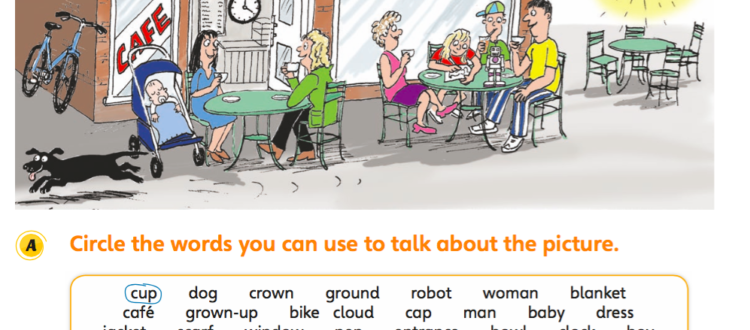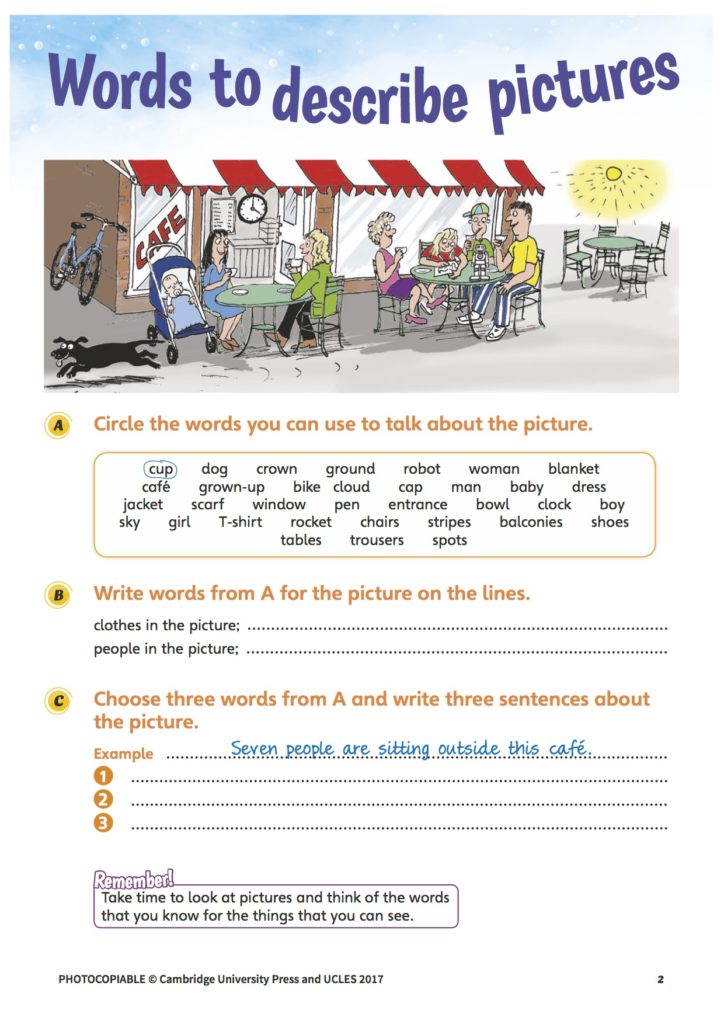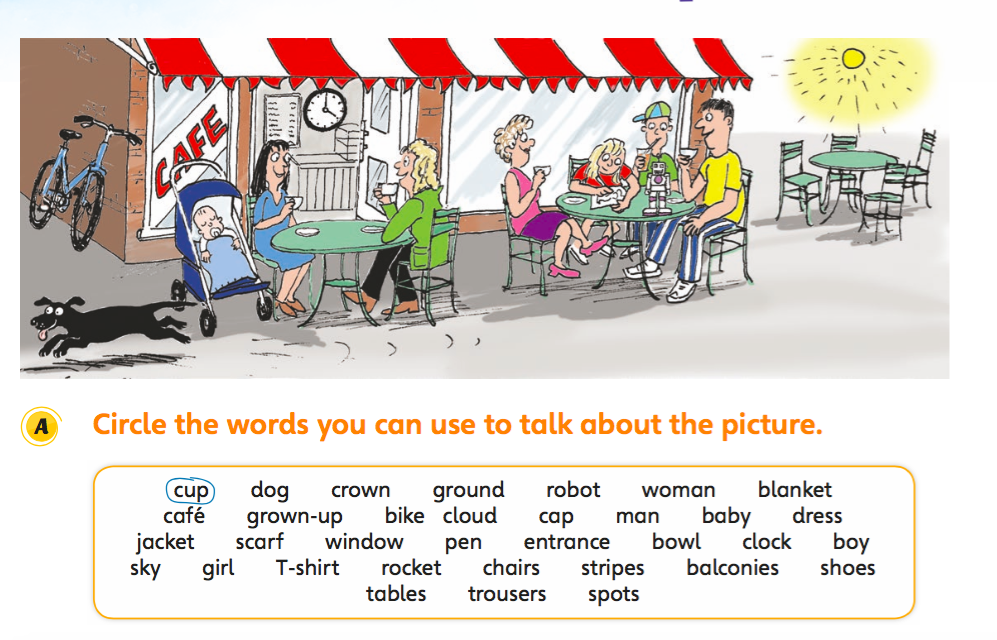Flyers Writing Skills Booklet – Words to describe pictures
Let’s look at Words to describe pictures from the Flyers Writing Skills Booklet.
This is the first step to building up to writing stories, something candidates have to do in the final part of the Reading and Writing papers in both A2 Flyers and A2 Key for Schools.
This page, like all the pages in the Booklet, can be used by students for self-study, but in this post, I want to share some ideas of using it in class (and for online classes) and extending the activities.
Nearly all the words should be circled, except for: crown, cloud, scarf, bowl, rocket, balconies, spots.
Extensions:
1 If your students are using a printed version of the picture, they could draw lines from the words they have circled to the people and things in the picture.
2 Or, why not ask them to add the missing things to the picture? e.g. Put spots on the blanket. Draw a bowl for the dog outside the café. Draw a crown on someone’s head. (Your students can choose where to add these things.)
In B, students have to write the words for clothes and for people for this picture on the lines.
Extension:
Ask: Which clothes word is missing for this picture? (skirt)
In C, they have to choose three words from A and write three sentences about the picture.
Extensions:
1 Challenge them to write as many DIFFERENT sentence formats and types of words as possible. In the example we have a sentence with a subject, present continuous, place adverbial.
For example, they can write sentences with:
There are
It’s ….. o’clock.
It’s sunny today.
Relative clauses e.g The woman who …
present perfect (The grown-ups have ordered coffee.)
comparatives (The woman in the green jacket’s hair is longer than the woman n the purple skirt.)
adjectives (colour, size, feelings, etc) (All the tables are round and green. The man’s trousers have blue and white stripes.)
2 Ask them to write sentences using ALL of the words they circled in A.
Other activities
1 Ask questions and encourage learners to use their imagination – no wrong answers here!
What’s the dog running after? Whose is the bike? (Note that there is no helmet anywhere in the picture, so perhaps it’s the owner’s bike.) How long have the people been at this café? Is it morning, afternoon or evening? What are the family’s names? How often do these people come to this café?
Training students to use their imagination will help them write better stories!
2 Ask learners to say if they would like to go to this café or not. (And why).
3 Ask them if there is anything they would like to add to this picture (e.g. I’d like to add some plants and flowers!)
4 Get them to find another picture. It could be in their coursebook, or in a story book, magazine, online. Ask them to write words for the picture AND to add 4-5 words for things that are NOT in the picture. They show their pictures and words to (an)other learner(s) who then circle(s) the words for the picture.
Here’s the link to the pdf booklet again.
Tip: To save just one page, in your browser (before downloading), select print. Choose the page you want to save and type that number, then save it as a pdf.



